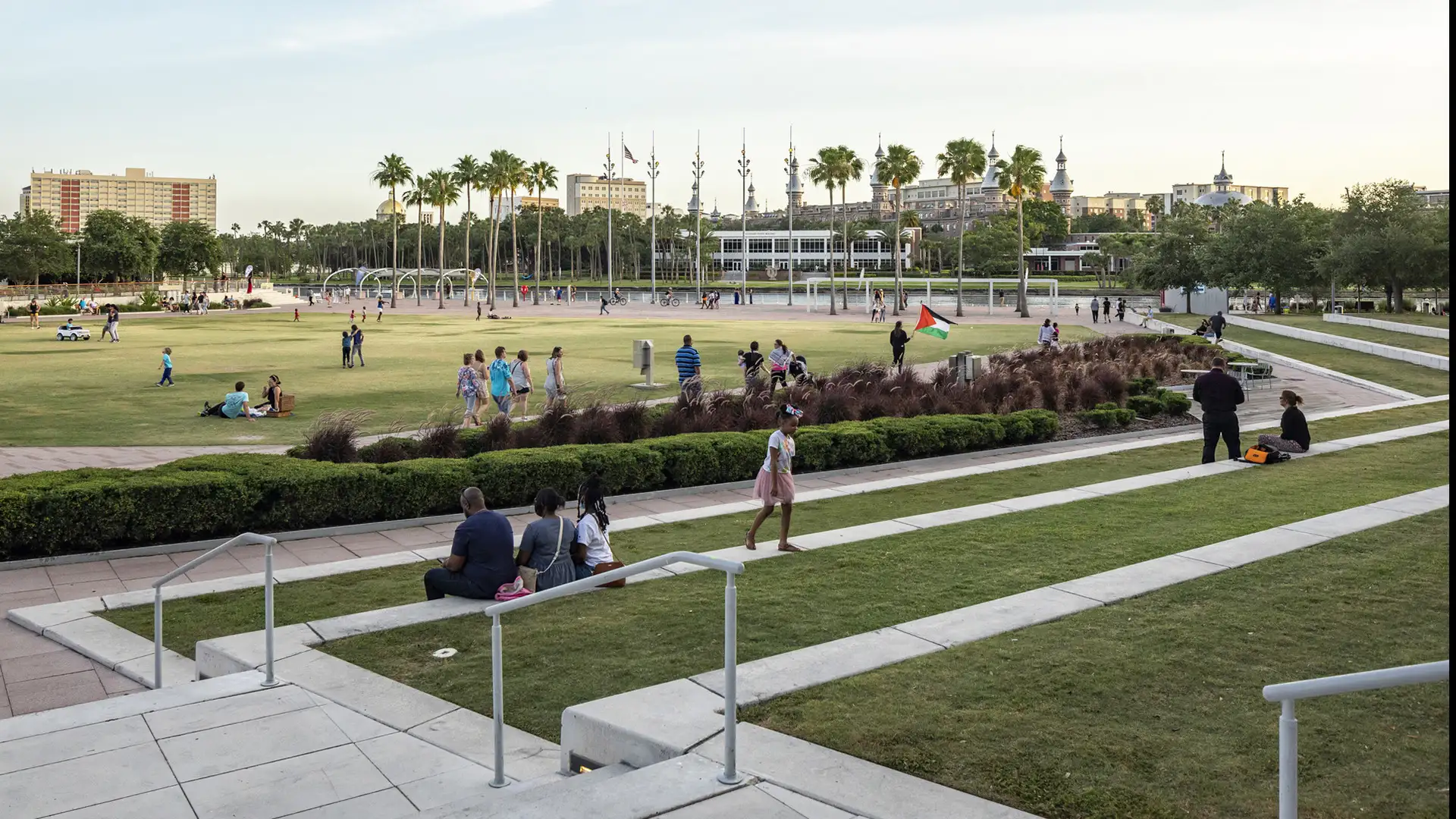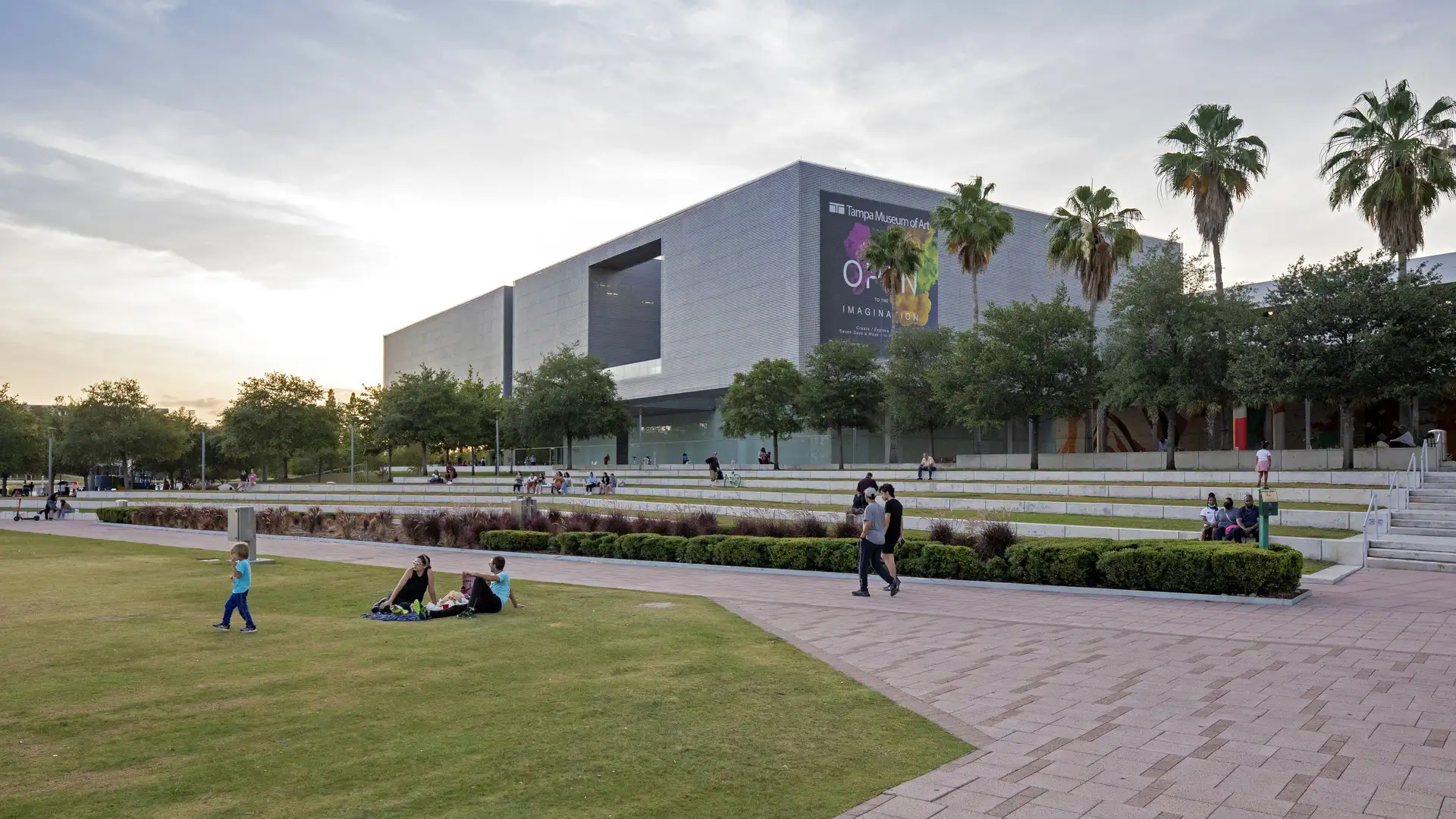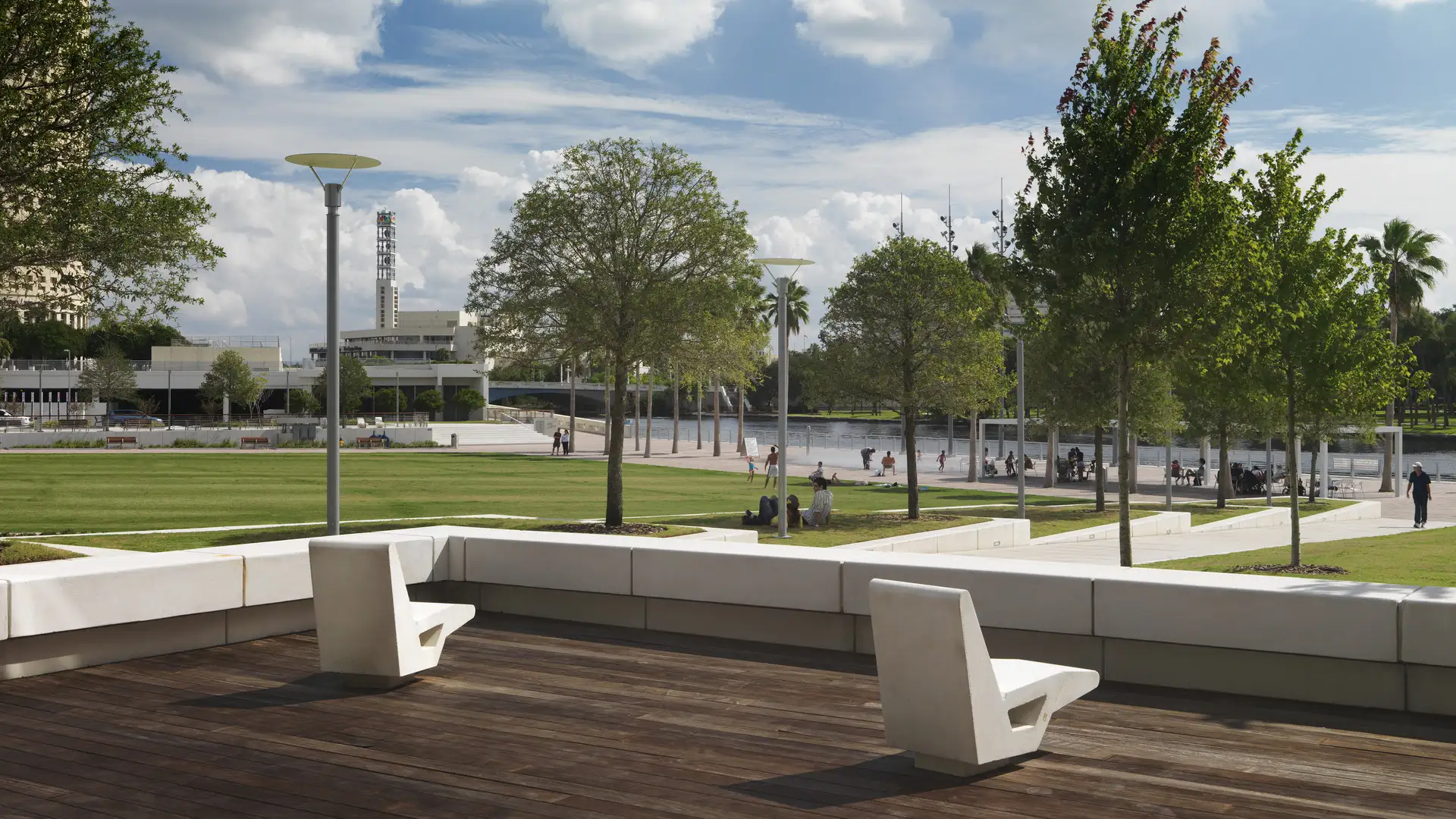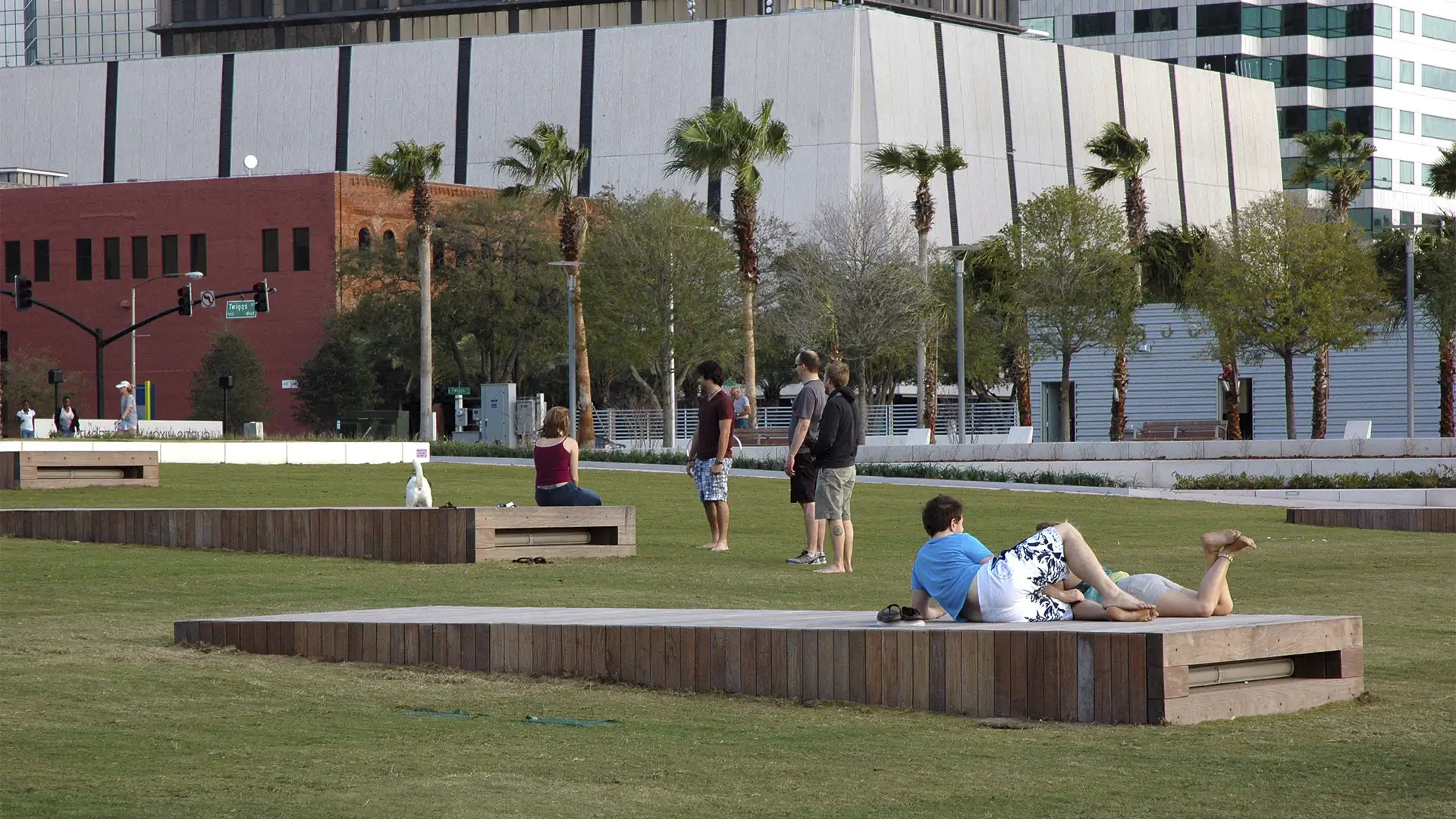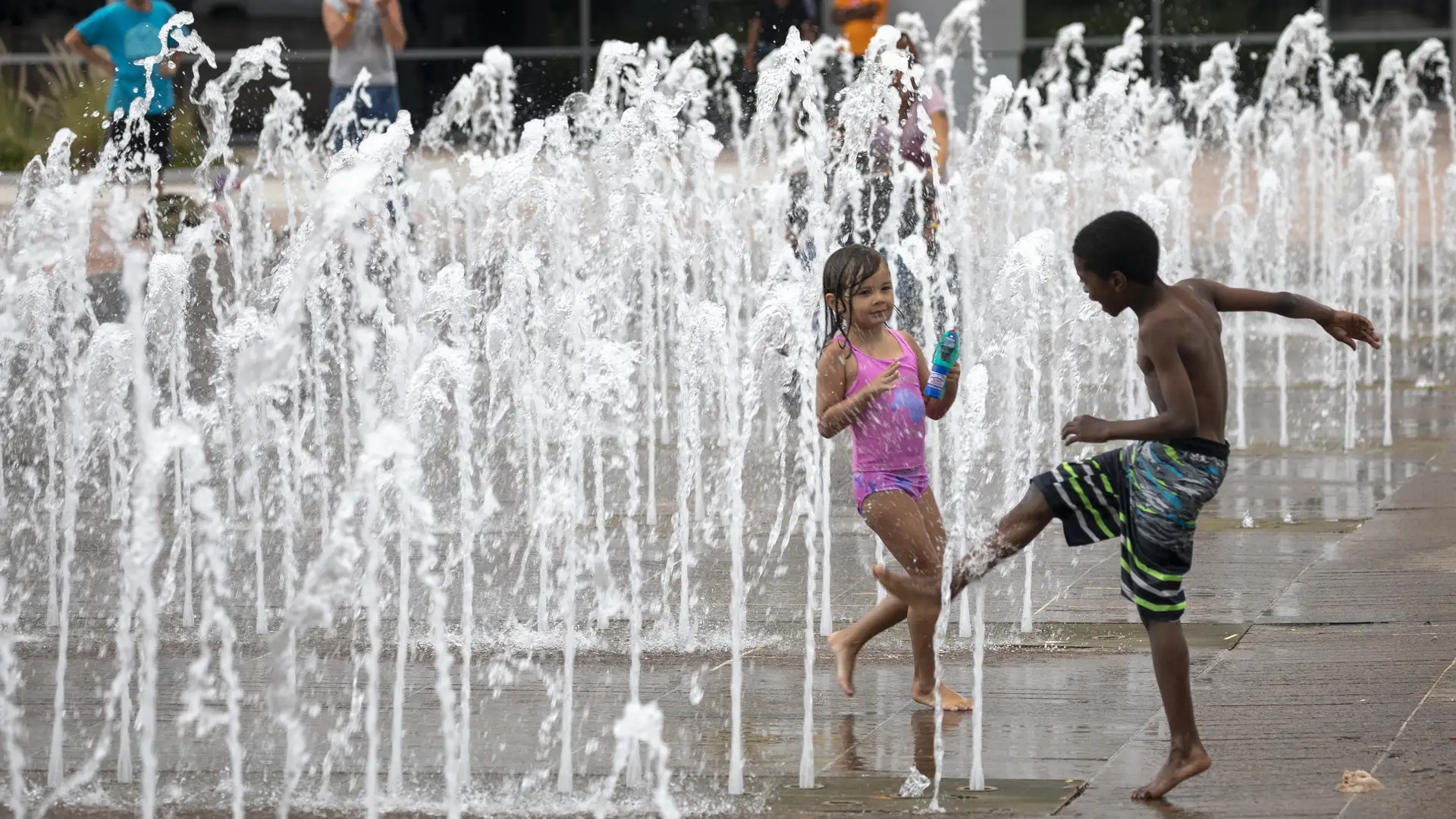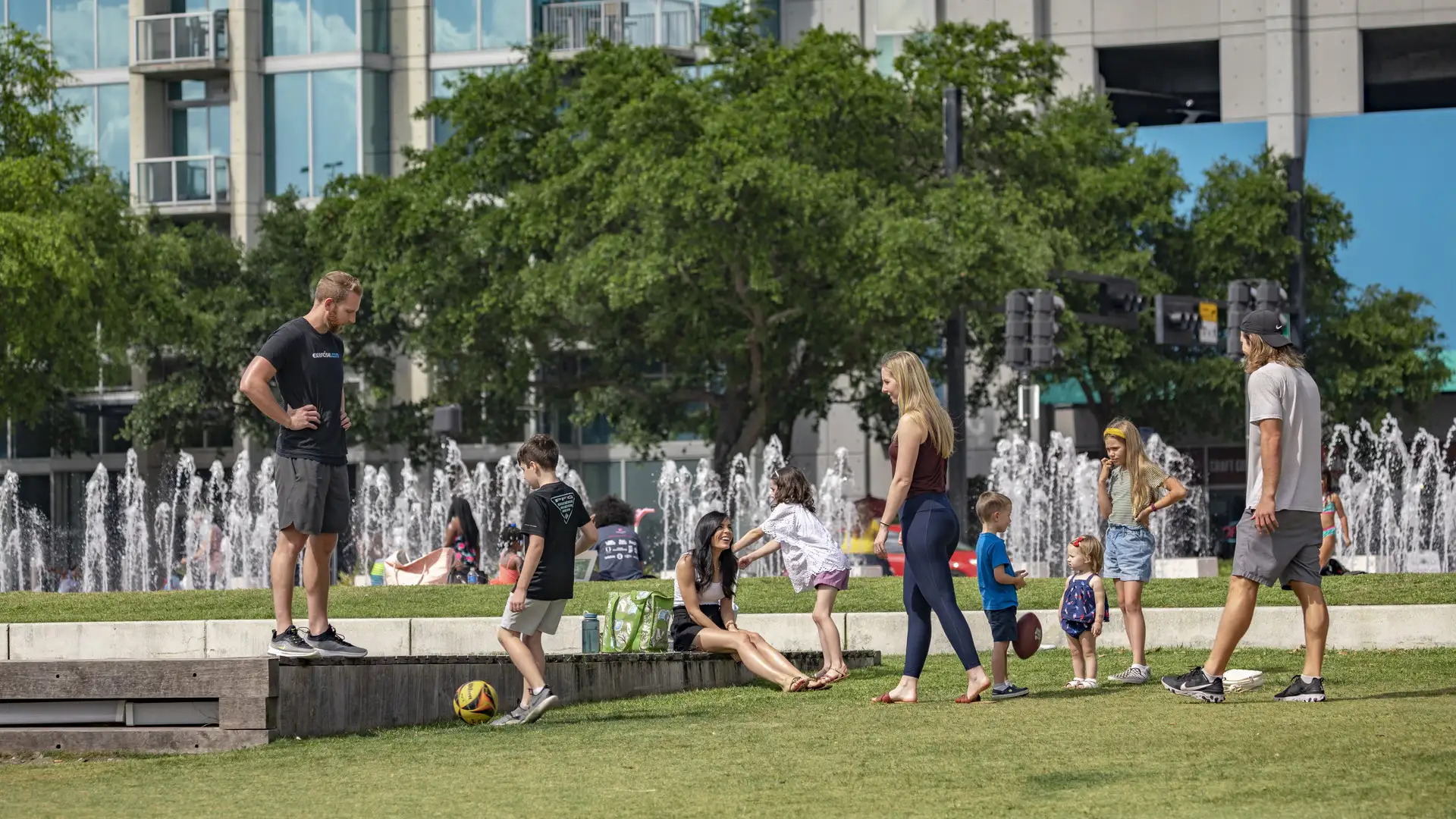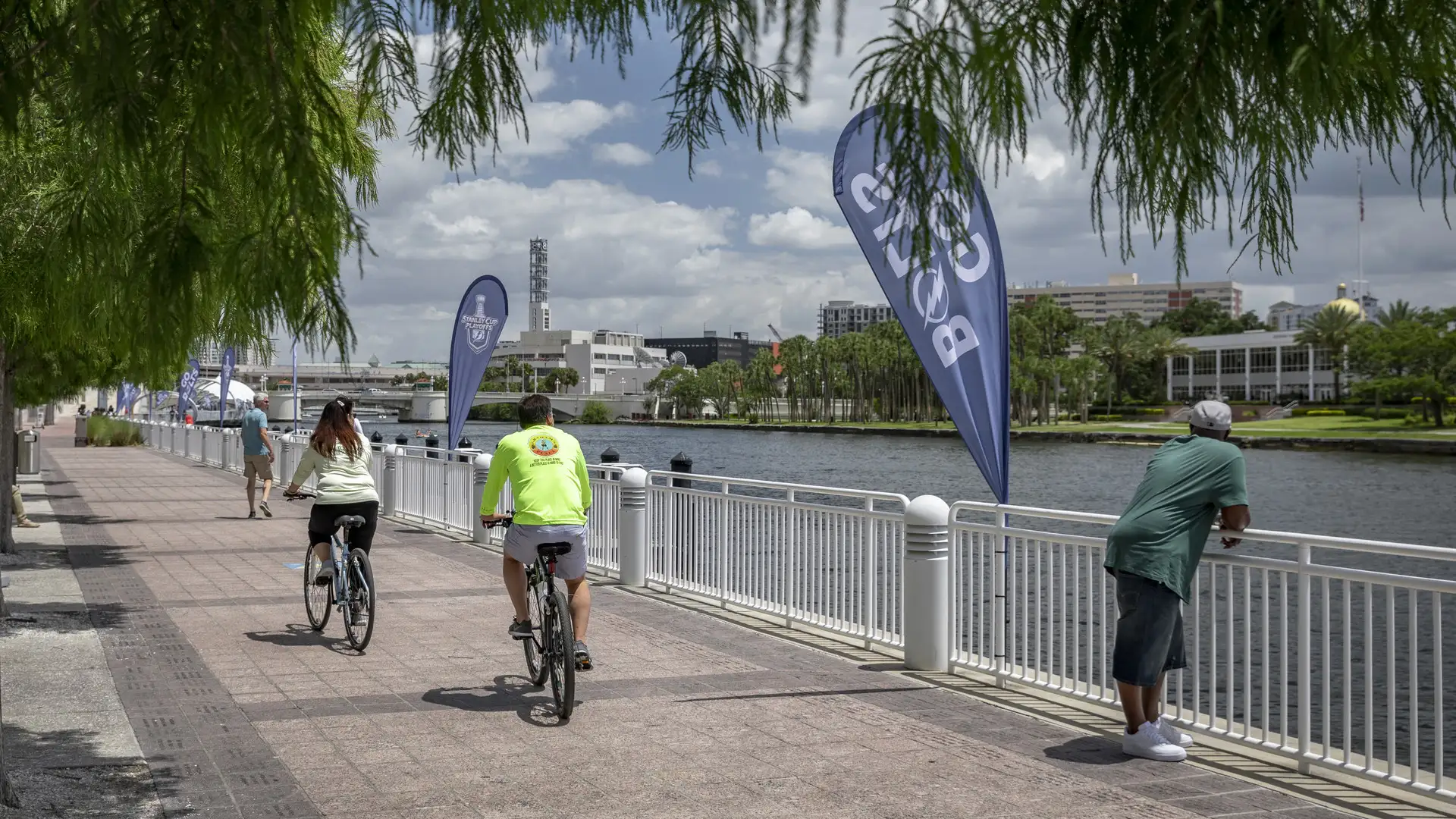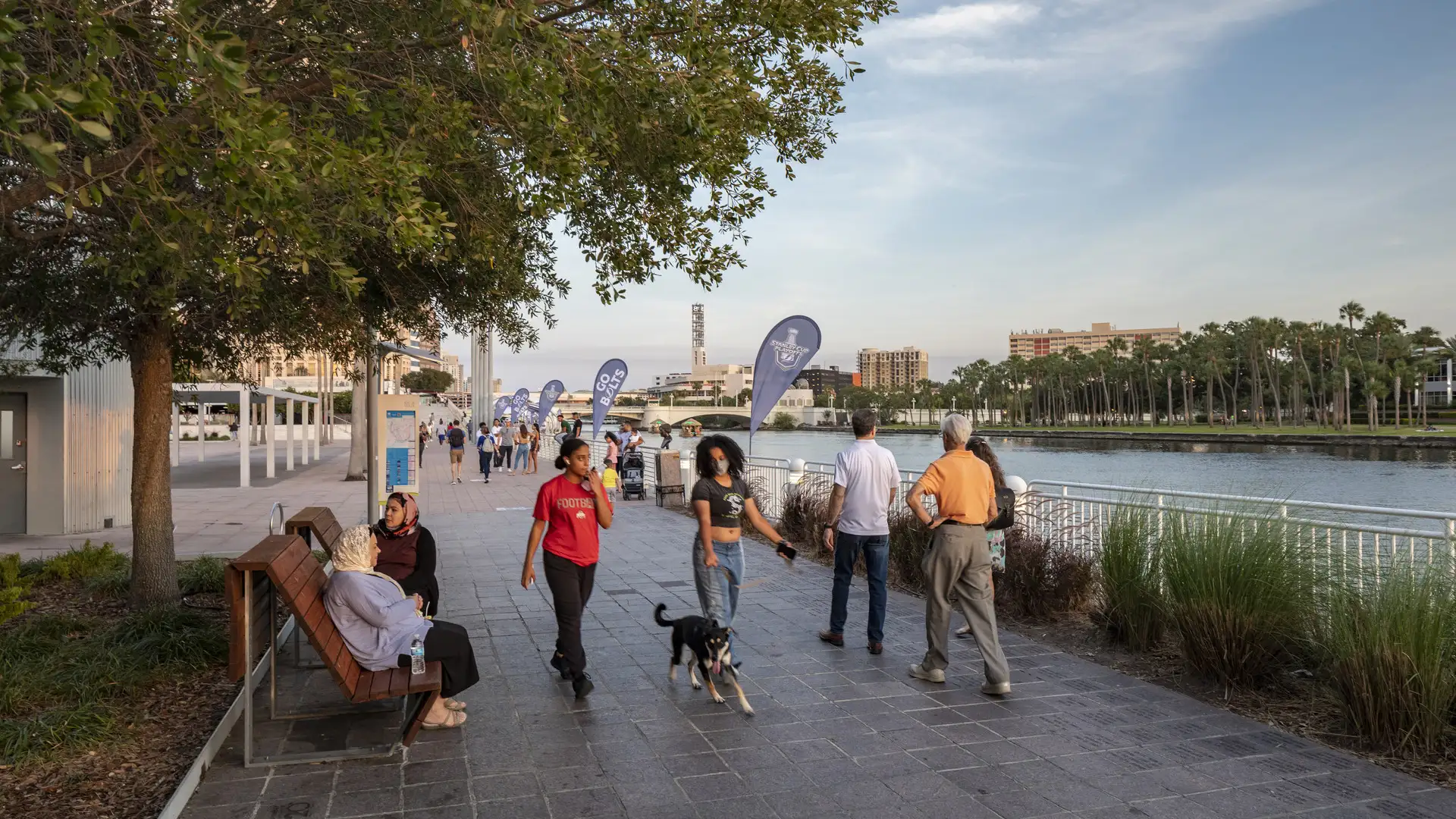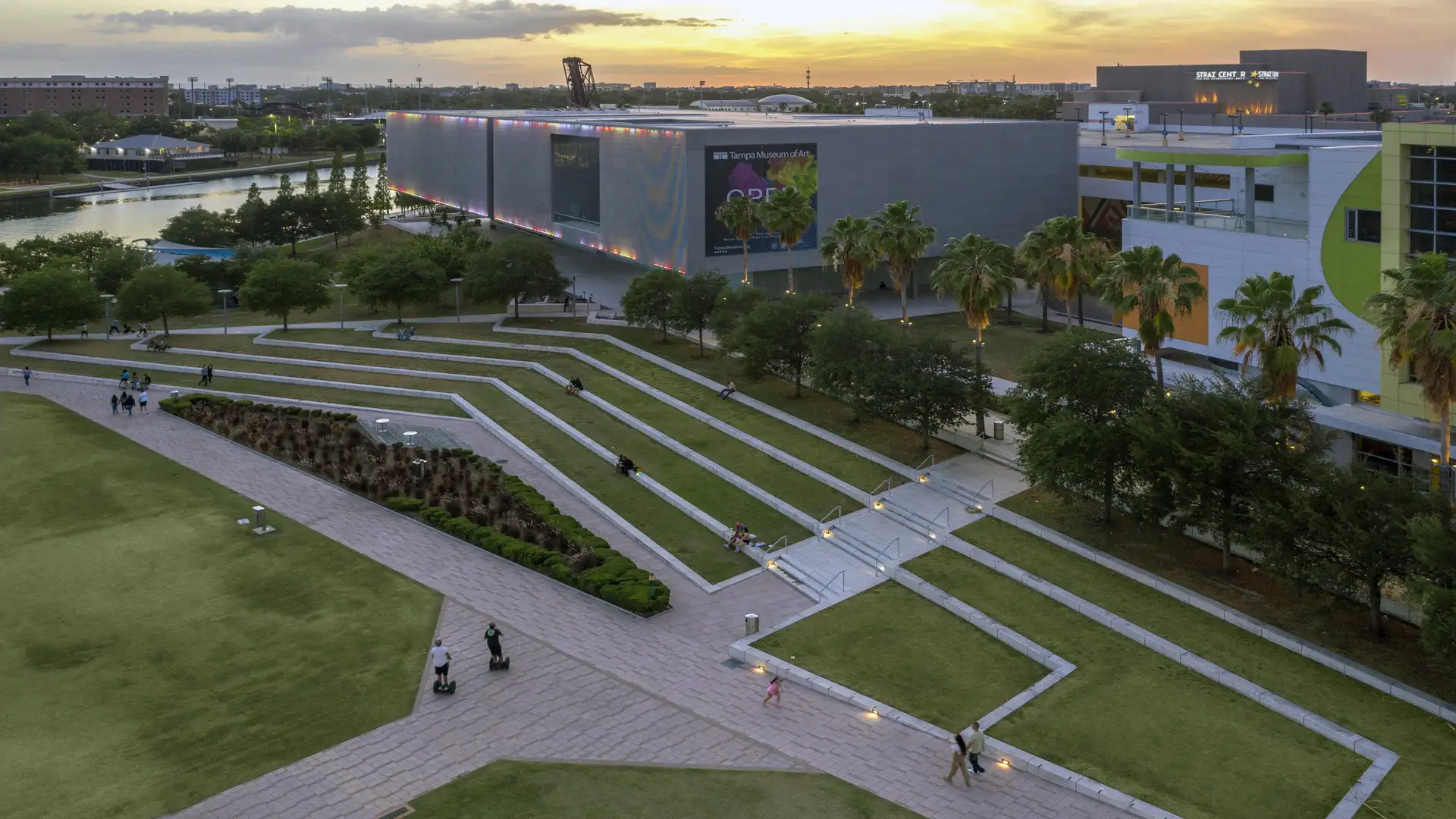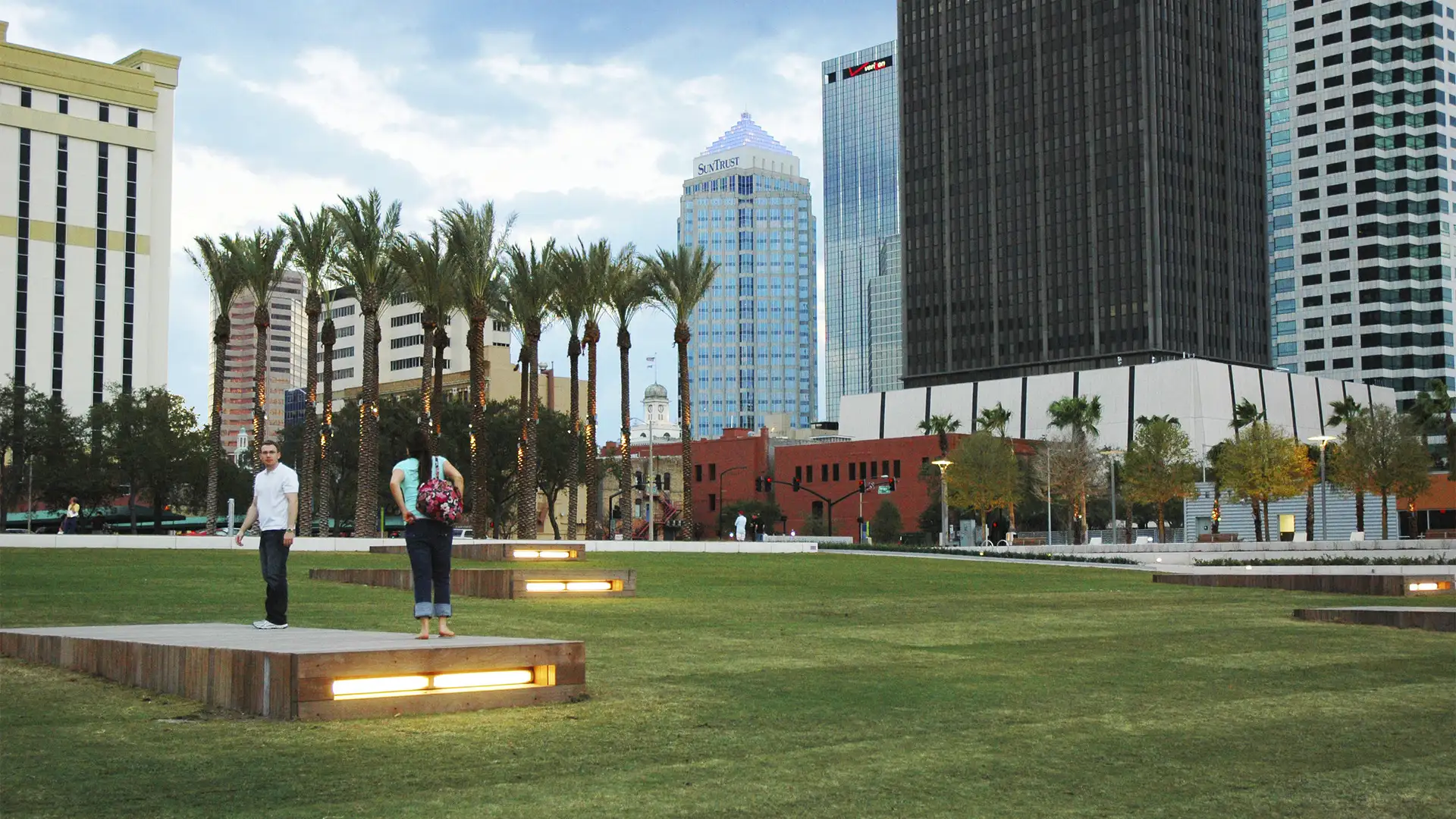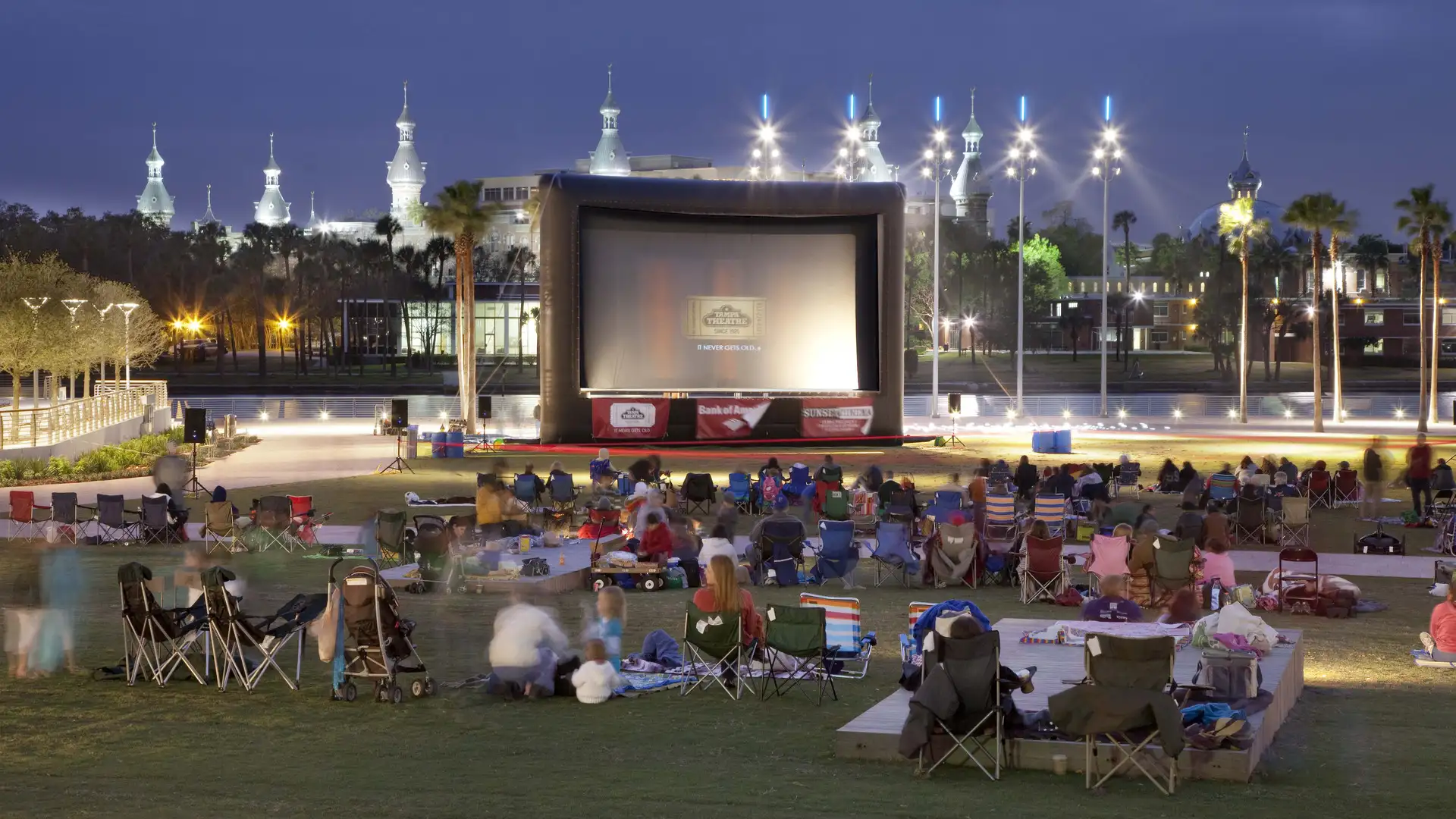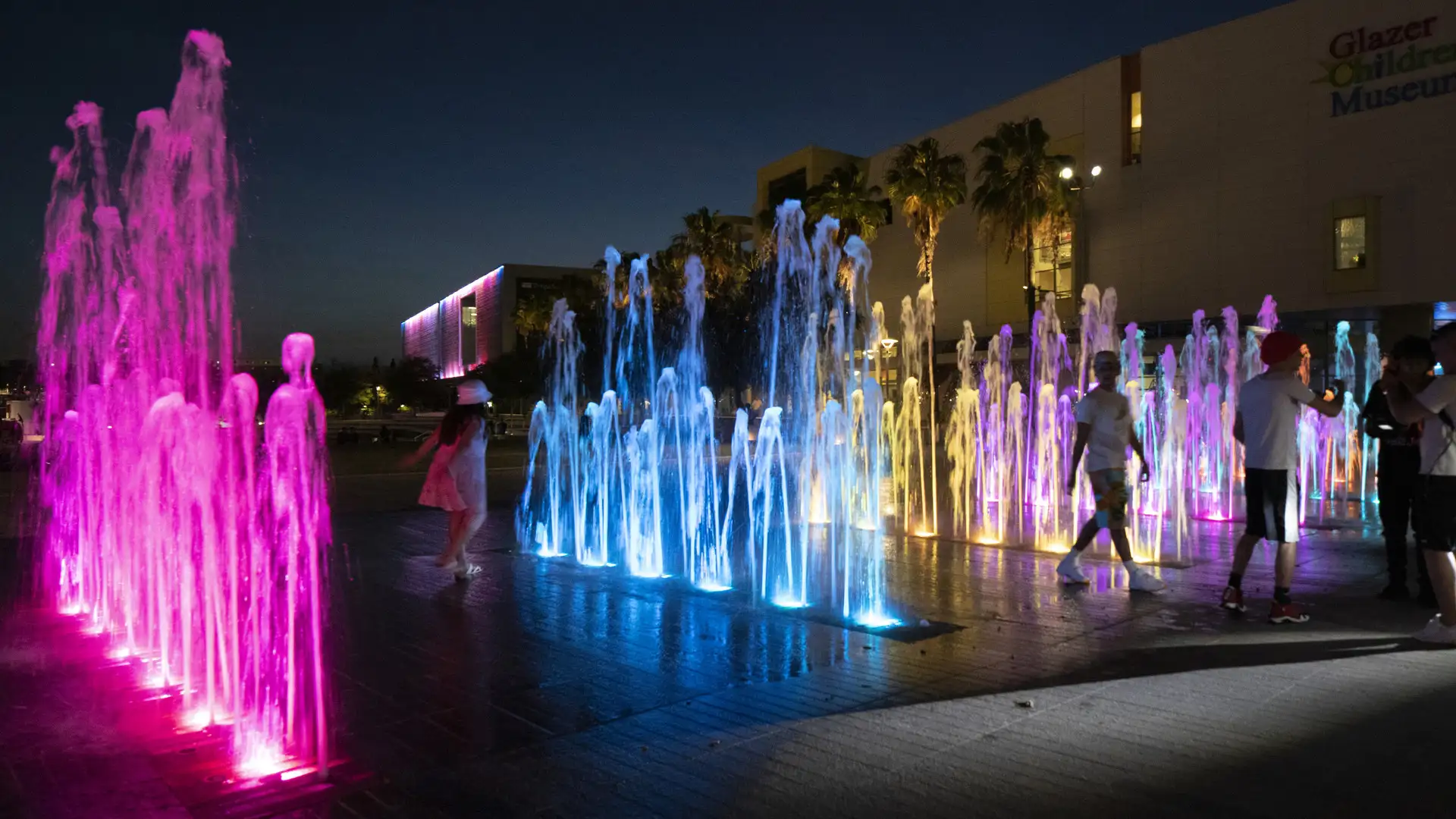Curtis Hixon Waterfront Park has been heralded as Tampa’s missing “here” and the crown jewel in the city’s Riverwalk, a bold urban plan conceived to reactivate the Hillsboro River and downtown Tampa. The master plan sets the park as the district’s focal point, positioning the Riverwalk, museums, and park buildings to the park and the waterfront. The plan boldly called for the removal of an old museum and sprawling parking garage that had denied the city access to its riverfront.
The park’s southern border connects with the renovated Kiley Garden, which had previously been elevated above grade, discouraging public access and enjoyment. A pedestrian bridge now connects both park spaces and gives new meaning to the garden. The Tampa Museum of Art and Glazer Children’s Museum have sprouted culture and family activities at the park, near the Great Lawn, an area surrounded by trees and scaled to accommodate large and small events. The lawn is framed on either end by fountain plazas that can become venues for larger festivals. The design carves into the sloping topography to reveal terraced lawn panels that spill down from the museum terraces and garden promenade. A linear park pavilion with restrooms, offices, a café, a visitor center, and a restaurant with unparalleled river views activates the southern edge.
The interactive louver and mist fountains at either end of the park are designed to capture Tampa’s imagination while cooling its residents. Distinctive fountains, pavement, and pylon lights extend the nighttime draw of citizens to the glowing park. Located along the Riverwalk and taking sculptural cues from the Museum of Art are a contemporary play area and urban dog run. Innovative lawn rafts, timber chairs, concrete loungers, and picnic tables reflect a commitment to 21st-century comforts beyond the conventional bench, drawing enthusiastic crowds to downtown Tampa’s new front lawn.
Golden Shoal Riverfront Park
Located along Chongqing’s Jialing River, this new linear public park offered unique challenges: a 30-meter annual river fluctuation, steep topography, and low-impact maintenance of a continuous riparian corridor. Adjacent new urban development, with attendant needs for green space, called for a flexible and resilient approach to the park’s landscape and infras...
Wusong Riverfront
Kunshan, China, located near Shanghai, has experienced unprecedented population and business growth in recent years which has resulted in environmental degradation and the need for the city to reshape its identity. SWA’s proposal aims to create a new waterfront district providing businesses as well as residents with public amenities and viable open space. The ...
Guicheng Riverfront
After winning a design competition in 2017, SWA undertook two projects within the Guicheng Riverfront park system, a defining blueway and leisure loop belt. The two completed parks – South Bank Waterfront Park and Eco-Island Park – are designed with distinct programmatic elements and characters based on the riverfront’s surrounding land use and urban settings,...
Dubai Creek Harbor
Dubai Creek Harbor is a progressive and innovative new neighborhood that aims to respond to environmental concerns with professional, best-practice measures that will ensure an environment that is healthy, accessible, and environmentally responsible.
The storied history, culture, and nature of Dubai Creek serves as the inspiration for the design of Duba...




